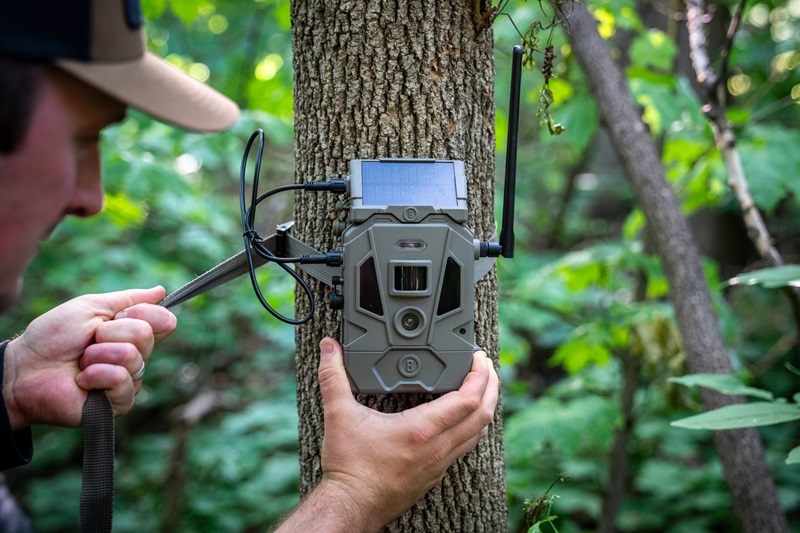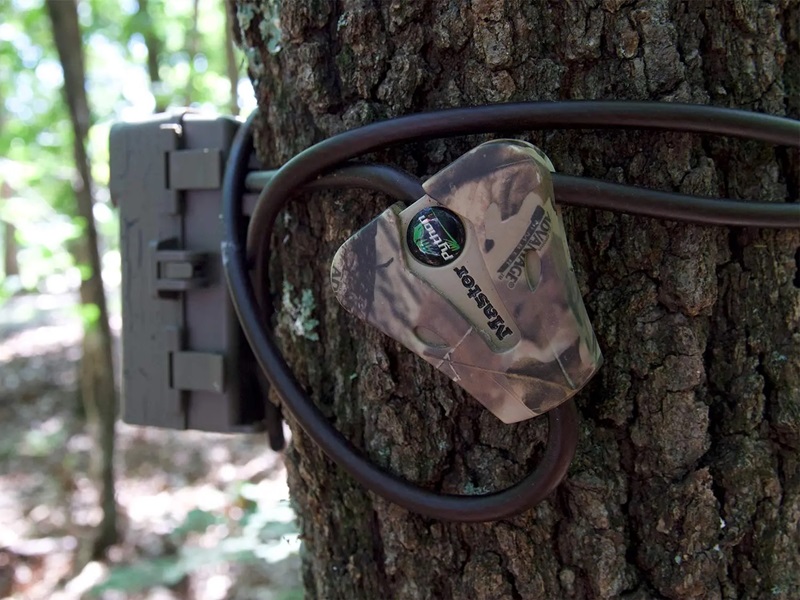Hunting demands keen observation and strategic planning. Hunters try to observe and study wild animals’ behaviour and movements which increases the likelihood of a successful hunt. To study their behaviour, hunters use cameras to record the habits and patterns of game animals.
Therefore, cameras are of great help for planning your approach with precision and as such, they have become vital devices for hunting strategies. Step up your hunting game and buy an outdoor hunting camera to enhance your chances of success.
What is the Difference Between an Outdoor Security Camera and a Trail Camera?

The biggest difference between a trail cam and an outdoor security camera lies in the purpose and design. Security cameras are used for surveillance and monitoring of residential and commercial buildings. On the other hand, hunting cameras are designed for wildlife observation and hunting purposes. They are used to monitor wild animals and their activities in natural habitats so hunters can use this info to plan a strategy for hunting.
Cameras for hunting have advanced features such as motion-activated triggers, infrared flash for night vision and long battery life. They can capture images or short videos of wildlife the moment a motion is detected.
There are many good cameras in the market to be found. Explore the available options and find the best outdoor hunting camera and enhance your hunting game.
How Trail Cameras Can Enhance Your Hunting Game?

Enhanced Scouting
The best feature of these invaluable devices is their ability to monitor wildlife activity 24/7. This is incredibly valuable for staying ahead of the game. You get to learn about animal movements, behaviour patterns and frequent visiting times.
They capture high-quality images and videos which you can then use to identify the presence of target game animals and their daily routine.
Location Optimtisation
Trail cameras help identify hot spots – the most active areas where animals tend to stick together whether those are feeding spots, water sources or trails. By identifying the hot spots, you’re setting up yourself for higher success, because you can use this knowledge to place your hunting stands or blinds in locations where the chances of a successful hunt are the highest.
Continuous monitoring also helps you get insight into the changes in animal activity during different seasons so you can adjust your hunting strategy.
Improved Success Rates
Hunting is all about planning to increase the chances of success and this is where hunting cameras swoop in to save the day. Your camera will alert you to the presence of a trophy animal which allows you to focus on the specific prey.
Also, by knowing the exact times when game animals are the most active, you can use this info to plan your hunts for peak activity periods which only increases the chances of encountering your target species.
Saving Time and Effort
Although hunting is mostly an adrenaline sport for many, it can also be quite exhausting. If you don’t have strategic planning and devices to help you narrow down the areas where the animals move the most, you can be scouting for hours and hours before you get a chance. Even that is not guaranteed. You can also spend the entire day hunting and coming back home with empty hands.
That’s why wildlife cameras are so important. They reduce the need for constant physical scouting which saves you a lot of time and effort. You can use the camera to monitor several locations simultaneously, without having to be physically present. Plus, these cameras allow you to gather all the info you need, without disturbing the natural behaviour of wildlife or spooking your specific targets.
Wildlife Monitoring
As it is with any sport, hunting also has specific rules in place which need to be followed. Unlike poachers, who viciously kill animals without any consideration, even those that are categorised as endangered species, hunters ensure compliance with hunting regulations.
Hunters use these cameras to monitor endangered or protected species, understand population dynamics and collect valuable data that can help them use sustainable hunting practices so they can contribute to wildlife conservation.
Setting Up and Using Trail Cameras

You’ve bought your first hunting camera, but here comes the most important, if not crucial part of the hunting process – setting up your camera at the right spot.
To do that, you must first use the camera to scout high-traffic areas where your target species are the most active. Look for natural funnels or pinch points where animals are likely to pass through, feeding spots, beddings or water sources.
If your target animal is a deer or other similar-sized game, mount the camera at a height of about 90 to 100 cm. For smaller animals, adjust the height accordingly.
Angle the camera slightly downward to capture the area perfectly and position it facing north, to avoid glare and overexposure.
Punt the camera on a sturdy tree and secure it with a lockbox or security cable to protect the camera from theft or damage. Take a few test shots to see what it looks like and check for any obstructions like branches or tall grass.
Check the camera regularly to ensure that it is working properly and has enough battery power.
